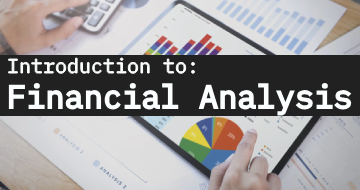IIRF Online > Finance & Accounting > Finance > Financial Analysis > Python & Machine Learning for Financial Analysis
Python & Machine Learning for Financial Analysis by Udemy
Master Python Programming Fundamentals and Harness the Power of ML to Solve Real-World Practical Applications in Finance
Course Highlights
- Master Python 3 programming fundamentals for Data Science and Machine Learning with focus on Finance.
- Understand how to leverage the power of Python to apply key financial concepts such as calculating daily portfolio returns, risk and Sharpe ratio.
- Understand the theory and intuition behind Capital Asset Pricing Model (CAPM)
- Understand how to use Jupyter Notebooks for developing, presenting and sharing Data Science projects.
- key Python Libraries such as NumPy for scientific computing, Pandas for Data Analysis, Matplotlib/Seaborn for data plotting/visualization
- Master SciKit-Learn library to build, train and tune machine learning models using real-world datasets.
- Apply machine and deep learning models to solve real-world problems in the banking and finance sectors
- Understand the theory and intuition behind several machine learning algorithms for regression, classification and clustering
- Assess the performance of trained machine learning regression models using various KPI (Key Performance indicators)
- Assess the performance of trained machine learning classifiers using various KPIs such as accuracy, precision, recall, and F1-score.
- Understand the underlying theory, intuition behind Artificial Neural Networks (ANNs), Recurrent Neural Networks (RNNs) & Long Short Term Memory Networks (LSTM).
- Train ANNs using back propagation and gradient descent algorithms.
- Optimize ANNs hyper parameters such as number of hidden layers and neurons to enhance network performance.
- Master feature engineering and data cleaning strategies for machine learning and data science applications.
Skills you will learn!
Curriculum
7 Topics
Welcome Message
Introduction Success Tips & Best Practices and Key Learning Outcomes
Course Outline and Key Learning Outcomes
Environment Setup & Course Materials Download
Google Colab Walkthrough
Python for Data Science Learning Path
Study Tips For Success
1 Topic
Introduction to Part #1: Python Programming Fundamentals
6 Topics
Colab Notebooks - Variables Assignment Math Ops Precedence and Print/Get
Variable assignment
Math operations
Precedence
Print operation
Get User Input
7 Topics
Colab Notebooks - Data Types
Booleans
List
Dictionaries
Strings
Tuples
Sets
5 Topics
Colab Notebooks - Comparison Operators Logical Operators and If Statements
Comparison operators
Logical operators
Conditional statements - Part #1
Conditional statements - Part #2
7 Topics
Colab Notebooks - For/While Loops Range List Comprehension
For loops
Range
While Loops
Break a loop
Nested loops
List comprehension
6 Topics
Colab Notebooks - Functions
Functions: built-in functions
Custom functions
Lambda expression
Map
Filter
3 Topics
Colab Notebooks - Files Operations
Reading & Writing Text Files
Reading & Writing CSV Files
7 Topics
Colab Notebooks - Numpy
Numpy basics
Built-in methods
Shape Length Type
Math operations
Slicing & indexing
Elements Selection
7 Topics
Colab Notebooks - Pandas
Pandas: Introduction to Pandas and DataFrames
Reading HTML data and applying functions and sorting
DataFrame operations
Pandas with functions
Ordering and Sorting
Merging/joining/concatenation
9 Topics
Colab Notebooks - Data Visualization with Matplotlib
Line Plot
Scatterplot
Pie Chart
Histograms
Multiple Plots
Subplots
3D Plots
BoxPlot
3 Topics
Colab Notebooks - Data Visualization with Seaborn
Data Visualization with Seaborn - Part #1
Data Visualization with Seaborn - Part #2
1 Topic
Introduction to Part #2: Python for Financial Analysis
9 Topics
Colab Notebooks - Stocks Data Analysis and Visualization in Python
Task 1
Task 2
Task 3
Task 4
Task 5
Task 6
Task 7
Task 8
9 Topics
Colab Notebooks - Asset Allocation and Statistical Data Analysis
Task 1
Task 2
Task 3
Task 4
Task 5
Task 6
Task 7
Task 8
8 Topics
Colab Notebooks - Capital Asset Pricing Model (CAPM)
Task 1
Task 2
Task 3
Task 4
Task 5
Task 6
Task 7
1 Topic
Introduction to Part #3: Machine and Deep Learning in Finance
13 Topics
Colab Notebooks - Predict Future Stock Prices Using Machine/Deep Learning
Task 1
Task 2
Task 3
Task 4
Task 5
Task 6
Task 7
Task 8
Task 9
Task 10
Task 11
Task 12
11 Topics
Colab Notebooks - Perform Bank Customers Segmentation
Problem statement and business case
Import libraries and datasets
Visualize data
Understand K-means algorithm
Obtain optimal K
Apply K-means clustering
Principal component analysis
Intuition of autoencoders
Train autoencoder
Apply autoencoder
11 Topics
Colab Notebooks - Perform Sentiment Analysis on Stocks Data
Task 1
Task 2
Task 3
Task 4
Task 5
Task 6
Task 7
Task 8
Task 9
Task 10
1 Topic
BONUS: Cloud Skills for ML & AI (COUPON inside)

Python & Machine Learning for Financial Analysis











